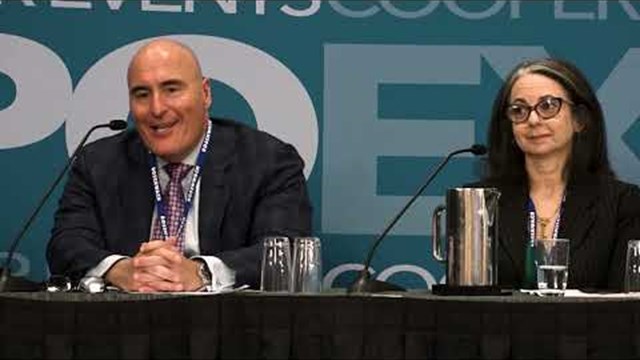In a typical co-op, condo, or homeowners association, residents have a lot to say about how their building or community is or should be functioning … but few actually step up to run for and serve on the board that does the actual governing. One reason is that board service can be a heavy lift, requiring time, energy, and diplomacy that the average homeowner might be unable or unwilling to give on a volunteer basis. Another reason is that those with the loudest opinions tend to refuse to be subject to the very wrath and skepticism that they are more than willing to dole out to their neighbors on the board.
Ideally, the committee format would help with both sides of the problem: boards could offload some tasks to other association or cooperative members, and those members could play a larger role in the oversight of their communities and get a first-hand taste of how things work from the inside—perhaps giving them a larger dose of empathy and/or understanding toward their fellow volunteers.
In practice, however, committees can be more trouble than they’re worth, having the opposite effect by making even more work for board members and creating further rifts or stalemates that waste even more people’s time and lead to even more acrimony. But there are ways to do it right, as several property managers, consultants, and committee participants tell CooperatorNews. Here are some tips they recommend.
Number 1: Set Expectations
There is such misconception, misuse, or both of committees in multifamily residential communities that Jasmine Martirossian wrote a book about it while earning her PhD in Law, Policy, and Society at Northeastern University in Boston. Her best-selling book, Decision-Making in Communities: Why Groups of Smart People Sometimes Make Bad Decisions, has earned her a reputation with co-op, condo, and HOA boards and property professionals all over the country looking to improve the effectiveness of their governing bodies. Martirossian is firm about the first and most important task of establishing a committee: “clearly communicating expectations and setting a specific purpose or goal.
“In fact,” she continues, “I don’t even like the open-ended concept of ‘committees.’ I recommend using task forces instead. A task force has a discrete and stated purpose, rather than a committee that is structured around a topic or category—think ‘hiring a new landscaper’ versus ‘grounds committee.’”
In the former, a board has established a specific task: procuring a vendor for providing landscaping services to the community. In Martirossian’s view, such a task force—or any task force for that matter—would be given a budget, a timeline, and a membership of three to five participants recruited from the association or cooperative. They would understand that the intention is for them to make a recommendation to the board, which the board can then take or leave as it sees fit. The recommendation would come from consensus of the members, which is why an odd number makes sense to avoid deadlocks or never-ending votes. The five-member limit, recommended by other industry professionals contacted for this article as well, ensures that the task force does not get mired in “paralysis by analysis,” as one property manager puts it.
Importantly, the task force or committee has no decision-making authority for the community and no power to spend corporation or association funds in pursuit or completion of its task, except if the board explicitly allocates such funds. Therefore, when putting the call out for volunteers, a board should “clearly communicate the purpose of the committee, how the process will benefit them, and what they will get out of the experience,” advises Martirossian, “to avoid having a group or individual with a false sense of power, and perhaps to weed out those whose motivation to volunteer is based on a desire for social interaction or venting opportunity.”
Number 2: Have a Mandate
“Unless the committee was put in place to serve a political purpose, committees with no clear mission should be disbanded,” says Julie Adamen, president of Adamen Inc., a national property management consulting firm based in Washington. “Committees need appropriate mission statements, structure, instructions, and guidelines. They really cannot function properly without these things in place.”
Martirossian agrees, adding that “a committee without a stated goal or purpose will be ineffective and is likely to result in frustration and waste people’s time,” which could make it even harder to get volunteers to step up. The members should be given “a clear directive that delineates what the work product should be,” whether that is a report on the association’s policies or a list of qualified vendors for a specific project or a recommendation for new lobby furnishings.
Adamen contends that managers should be the ones to give a committee or task force its marching orders, rather than the board. They should also be available to steer any committee that is having trouble coming to a consensus or that loses sight of its mission. “Ultimately, the committee is charged with preserving, protecting, maintaining, and enhancing the property of the community, regardless of its specific task or mandate,” she says. “It’s the manager’s job to know what the role of the committee is and be able to articulate it at any time.”
Jennifer Stopka, CMCA, AMS, PCAM, vice president of suburban management at FirstService Residential Illinois, notes that in the Chicagoland area, there has been an increase of groups within a community to help support the board of directors with association business. Committees—sometimes referred to in governing documents as “commissions”—can serve a similar purpose. She says that a common use of a commission in her client communities is for project recommendations, with the task of creating a scope of work, researching and meeting with vendors, narrowing down options, and presenting any proposals to the board. The manager acts as liaison in the process. She concurs that to set all parties involved up for success, it helps to have a specific charter that delineates the commission’s scope of responsibility as approved by the board.
Eric Mullendore is a Chicago interior designer and architect who has worked with several co-op and condo boards and design committees on redecorations and renovations of lobbies, hallways, and other common areas. Of these projects, he says, “The biggest challenge is obviously working with a committee, because everybody’s got an opinion, and everybody has a friend who has an opinion. As an interior designer, you have to come in with the mindset that you cannot please everyone. And you win some and you lose some, and you decide which battles are with fighting and which battles are not worth fighting.
“In other words,” he continues, “there’s a certain need for compromise.”
Number 3: Keep It Formal
Paul A., a shareholder in a Manhattan co-op who has served on the finance committee of his building and requested omission of his full last name, shares some advice from the trenches. “My committee experience was very frustrating,” he says. “It was open to anyone in the building and attracted mostly naysayers and busybodies who just wanted to complain or didn’t trust the board.” When asked what might have improved the experience, he had several concrete ideas—which he was hoping to implement as he was considering running for a board seat in the next election.
“Leadership is important,” he suggests. “Having someone who can set an agenda, run the meetings, keep everyone on task. Our chair was not organized and just let everyone talk over one another. Even though he was a CPA, which was why he was elected chair, he didn’t have the ability to make anything effective come out of the meetings.” Paul hopes that if he is elected to the board next year, he can implement some formality to the committee structure, starting with limiting the number and expertise or interests of the participants, following Robert’s Rules of Order during meetings, and concluding each with actionable steps or assignments that can then be submitted to the board.
Adamen makes similar recommendations to her clients. “Successful committees should be made up of individuals with an expertise in a given area, commitment to the cause or individuals fulfilling their community responsibilities,” she says. “A written report should be expected from committees every board meeting. That way there is ownership of the process and mission.” She adds that any committee, task force, or working group should have “clearly written out and defined guidelines, a code of conduct, and total transparency with deadlines, procedures, and the mission spelled out in writing.”
Mullendore also champions formality in committee work. He notes that most multifamily projects involve interconnected elements such as multiple stakeholders, complex sequencing, cash flow monitoring, code compliance, and resident engagement. “It is a highly organized game of logistics,” he says. “If a committee is to be successful and effective, it has to be buttoned up to the top, really take command of the process.”
Good Coms
It stands to reason that descriptions of effective committees contain so many other “com” words: community, commitment, command, communication, compromise, just to name a few. The root “com-,” from the Latin “with, together with, jointly,” implies that committees are expected to be an add-on—a complement—if you will, to the work of the elected board of directors or trustees. To that end, they should have clear expectations, a stated purpose, and a formal structure with solid leadership to get to their goal: providing a concrete recommendation upon which the board can choose to act or not.
Darcey Gerstein is Associate Editor and a Staff Writer for CooperatorNews.







Leave a Comment